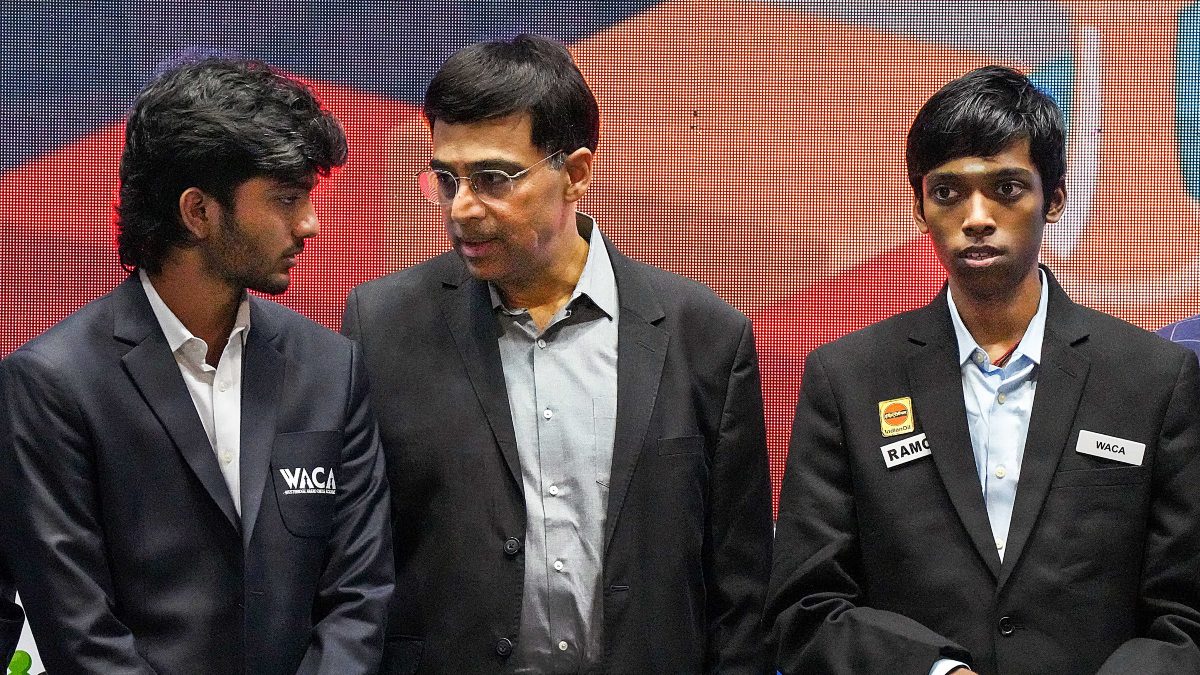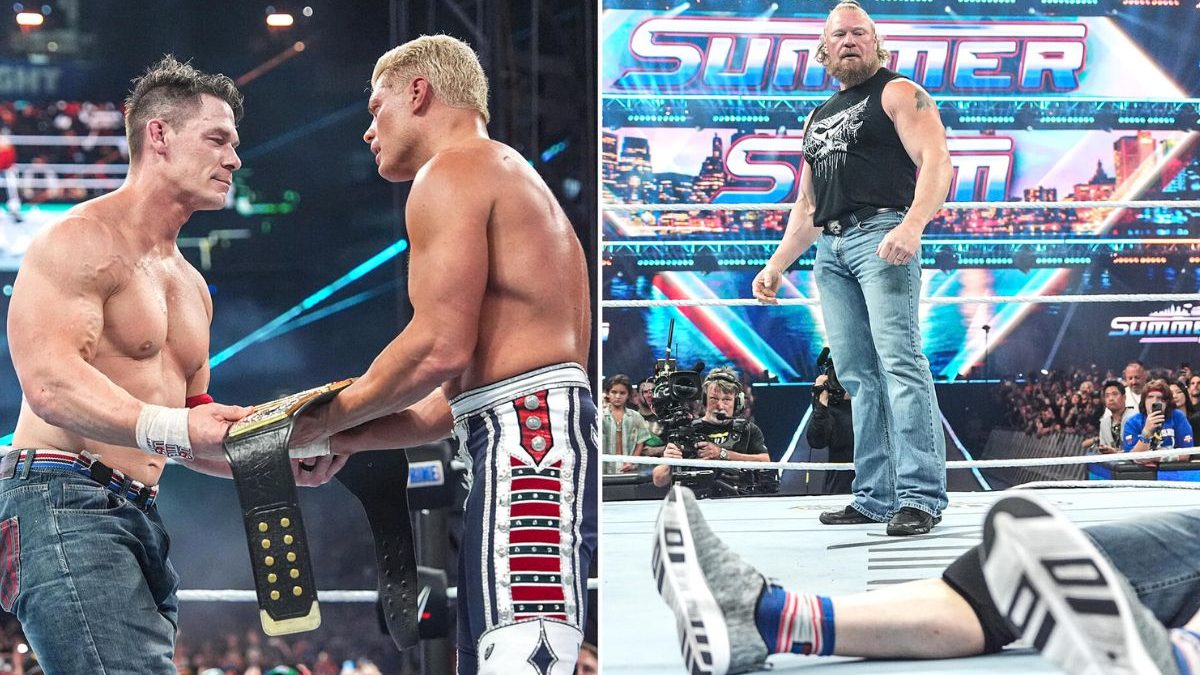The year 2024 has been revolutionary for Indian chess with the likes of D Gukesh, Arjun Erigaisi, and R Praggnanandhaa shining in some of the world’s biggest events. Gukesh made history in April when he became the youngest champion in the history of the Candidates Tournament . Five months later in Budapest, he would play a central role in India's golden sweep at the 45th Chess Olympiad .
The watershed year for Indian chess will be made even more special if Gukesh goes on to defeat Ding Liren in the World Chess Championship in Singapore starting Monday. Even if the 18-year-old Grandmaster falls short despite entering the best-of-14 match series as the runaway favourite, it will not take anything away from the fact that India has finally discovered its golden generation in chess and that Gukesh, Arjun, Divya Deshmukh, and the rest of the young stars are just getting started.
The credit for shaping today’s stars, however, goes to the legendary Viswanathan Anand, widely considered one of the greatest players of all time.
Charting a meteoric rise
With the emergence of Gukesh, Arjun, and other young stars, India has finally realised its potential as a chess superpower. However, it was one man who had put India on the world chess map more than three decades ago and would be carrying Indian chess in a remarkable career that had concluded only recently.
Anand, who was taught the sport by his mother at the age of 6, became the first India’s first chess grandmaster at the age of 18 after winning the Shakti Finance International Chess Tournament in Coimbatore. This was after his meteoric rise in age-level tournaments, including the Asian Junior Championship in 1984, earning the nickname ‘Lightning Kid’ along the way. And before realising his dream of becoming a GM, Anand had become the youngest Indian to earn the title of International Master.
Impact Shorts
More ShortsWhere Anand had truly announced himself as one of the sport’s all-time greats was when he began to put up strong challenges against the legendary pair of Garry Kasparov and Anatoly Karpov in the early 1990s, eventually facing the former in the PCA World Chess Championship match atop New York City’s World Trade Center in 1995.
On top of the world in 2000
Anand fell narrowly short of being crowned world champion after losing to Kasparov 7.5-10.5 in the ‘Big Apple’. Three years later, he would suffer another heartbreak at the hands of a Russian GM, this time losing to Karpov in a rapid playoff after both players were tied at 3-3 in the 1998 FIDE World Championship.
Having established himself as a top dog in the 1990s, it was only a matter of time before Anand realised his dream of being crowned world champion – which he did when he defeated Russian-born Spanish GM Alexei Shirov two years after his defeat against Karpov in the 2000 World Chess Championship.
After breezing through the first six rounds in New Delhi unbeaten, Anand defeated Shirov in the final in Tehran to become not just the first Asian to be crowned world chess champion but also the first non-Soviet player since American legend Bobby Fischer to achieve the feat.
To prove that his triumph in 2000 at the age of 31 was by no means a one-off, Anand would go on to win the 2007 edition as well, beating Russia’s Vladimir Kramnik to the top spot among eight participants, two years after he finished runner-up to Bulgaria’s Veselin Topalov.
Anand would go on to win the World Championship three more times, defeating Kramnik in 2008 followed by Topalov in 2010 and Israel’s Boris Gelfand in 2012 respectively.
His six-year reign as world champion would end in 2013, when he lost to Norwegian Grandmaster Magnus Carlsen – who would reign supreme for the next decade before deciding against defending his title last year, allowing Chinese GM Ding to take his spot and defeat Candidates winner Ian Nepomniachtchi in Astana.
Shaping the current generation
Anand, who had a peak ELO rating of 2817 that places him at the joint-eighth spot in the all-time list, continued competing in events across the world after surrendering the world title to Carlsen in 2013, appearing in the Candidates Tournament the following year and making multiple appearances in the Grand Chess Tour besides defeating Carlsen in the Norway Chess Blitz as recently as two years ago.
However, it was in recent years that the recipient of the Padma Vibhushan award – the second highest civilian award that was presented to him by the Government of India in 2008 – began to take the first steps towards discovering “the next Anand”. In collaboration with WestBridge Capital, the Indian chess legend would launch the WestBridge Anand Chess Academy in December 2020.
Among the first batch of players who were granted WACA Fellowship were Gukesh, Praggnanandhaa, and his sister R Vaishali as well as Nihal Sarin and Raunak Sadhwani. It wouldn’t take long for his academy to make a real impact with some of the country’s top chess talents, with three of those five players starring in the Olympiad triumph in September and Gukesh being crowned Candidates winner in Toronto earlier in April.
The passing of the torch appeared to have been complete when Gukesh dethroned Anand as India's top-ranked chess player after a period of 37 years by reaching an Elo rating of 2,756 on 3 August last year. This was a month after Gukesh defeated his mentor at the SuperUnited Rapid and Blitz Croatia 2023.
“Vishy sir has been a huge inspiration to me, and I have heavily benefitted from his academy. I am truly grateful to him and wouldn’t have been close to what I am now if it wasn’t for him,” Gukesh had said after the incredible feat of surpassing the 54-year-old Anand.
All that’s left for Gukesh is to give Anand company on the list of Indians with world chess championship triumphs, which he certainly appears well-poised to accomplish four days before the start of the event.


)

)
)
)
)
)
)
)
)



